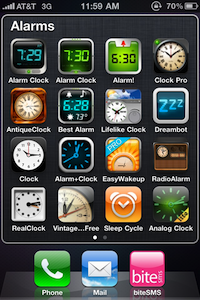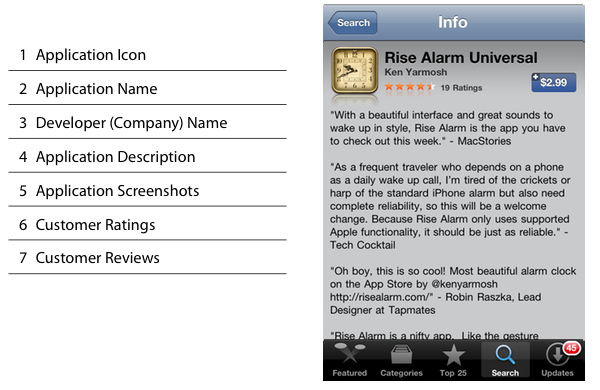 With the phenomenal growth of smart mobile devices, mobile apps, and their respective app stores over the last several years, just about everyone has an idea for a mobile app. And with each idea comes the belief that it may in fact be the next big thing — a million dollar app that can save its creator from the daily 9-5 grind. It’s true that a fortuitous few have indeed realized their million dollar idea, but for many others their ideas remain dreams alone.
With the phenomenal growth of smart mobile devices, mobile apps, and their respective app stores over the last several years, just about everyone has an idea for a mobile app. And with each idea comes the belief that it may in fact be the next big thing — a million dollar app that can save its creator from the daily 9-5 grind. It’s true that a fortuitous few have indeed realized their million dollar idea, but for many others their ideas remain dreams alone.
Working in the mobile app industry through these early days of the latest technological gold rush, I’ve seen the same app mistakes made time and time again. Failure, like success, follows a particular pattern. And so, I set out to distill the top 10 reasons why apps often falter or fail, with the hope that this list brings more reason and less emotion into the process of building mobile applications.
Mistake 1. Begin coding immediately
Many fail in the mobile space because they start developing their app as soon as they have an idea. In the extreme case, those with programming skills will actually start coding the app immediately. The first steps, however, should be focused on business and strategy aspects; pixels and design or coding and development come later in the process.
Mistake 2. Ignore competitors and alternatives
One of those business and strategy aspects that many pursuing apps ignore is to identify and use competitor apps. Understanding what competitors do well and where they’ve come up short will provide guidance on what features to develop and how to differentiate an app. Similarly, learning from top apps in app stores or even real-world alternatives, can reveal opportunities for innovation.
Mistake 3. Be purposeless
Wanting a million dollars shouldn’t be the sole motivation for building an app. At the same time, app stores are likely one of the best places to pursue a new venture right now. Ultimately though, it is still a new venture and any new venture comes with a certain amount of risk. Outlining clear short- and long-term goals, that are aspirational yet attainable, will provide a much better foundation for success.
 App Savvy: Turning Ideas into iPad and iPhone Apps Customers Really Want — While many books simply explore the technical aspects of iPad and iPhone app design and development, “App Savvy” also focuses on the business, product, and marketing elements critical to pursuing, completing, and selling your app.
App Savvy: Turning Ideas into iPad and iPhone Apps Customers Really Want — While many books simply explore the technical aspects of iPad and iPhone app design and development, “App Savvy” also focuses on the business, product, and marketing elements critical to pursuing, completing, and selling your app.Mistake 4. Consider project plans useless
It’s not necessary to create a Gantt chart, but having a project plan for an app is critical. A project plan will demand accountability and set expectations, especially if working in a team. It should also help with one of the biggest problems in software development: actually shipping the app to the app stores.
Mistake 5. Start marketing after the app is launched
Many begin marketing their apps after they are in app stores. Doing so will result in not taking advantage of the initial bump provided by the app store new release lists. Getting marketing moving earlier will allow interested media outlets to have reviews ready when the app hits the stores, thus providing a better opportunity for the app to rank in its category.
Mistake 6. Spend little time thinking about branding
The app name, app icon, app description, and even the app interface are often developed independently of one another. As I’ve written in the past, however, these elements should be considered together because they help create the branding identity of the application. And that’s even more important if there are plans to eventually have more than one app.

Mistake 7. Don’t talk to customers before and after the app is launched
It’s amazing how often people build their apps in isolation. They may get feedback from a couple of friends or family members, but they really don’t develop serious beta testing programs with potential customers. Then, they launch the app and find reviews complaining about buggy or even missing features. Increasing the number of those looking at and using an app through a beta program will result in a more solid and compelling application by the time it hits the app store.
Mistake 8. Include zero contact points within the app
Not hearing from customers can be a symptom of an unhealthy app. It also might be because customers simply don’t know how to get in touch with the creators of the app. Including basic support channels such as in app email or a link to a website can ensure customers will share thoughts, feedback, or bug reports quickly and easily.
Mistake 9. Forget to install analytics
Apps often generate qualitative feedback such as customer reviews, blog posts, and emails. Unless analytics are installed, quantitative feedback is typically only available through download and sales numbers. Analytics tools can offer basic insight into usage patterns or provide very detailed data about specific actions customers are doing inside the app. In either case, hard data is extremely valuable.
Mistake 10. Never update the app
After pushing out an initial version of an app, people give up on it if it’s not a runaway hit right away. To keep customers engaged, it’s a good practice to release one or two updates per month, related to either bug fixes or new features. You can cut back on app update investements if the app continues to show no signs of life, but that decision should not happen a week or even a month after the launch of an app.
Related:
